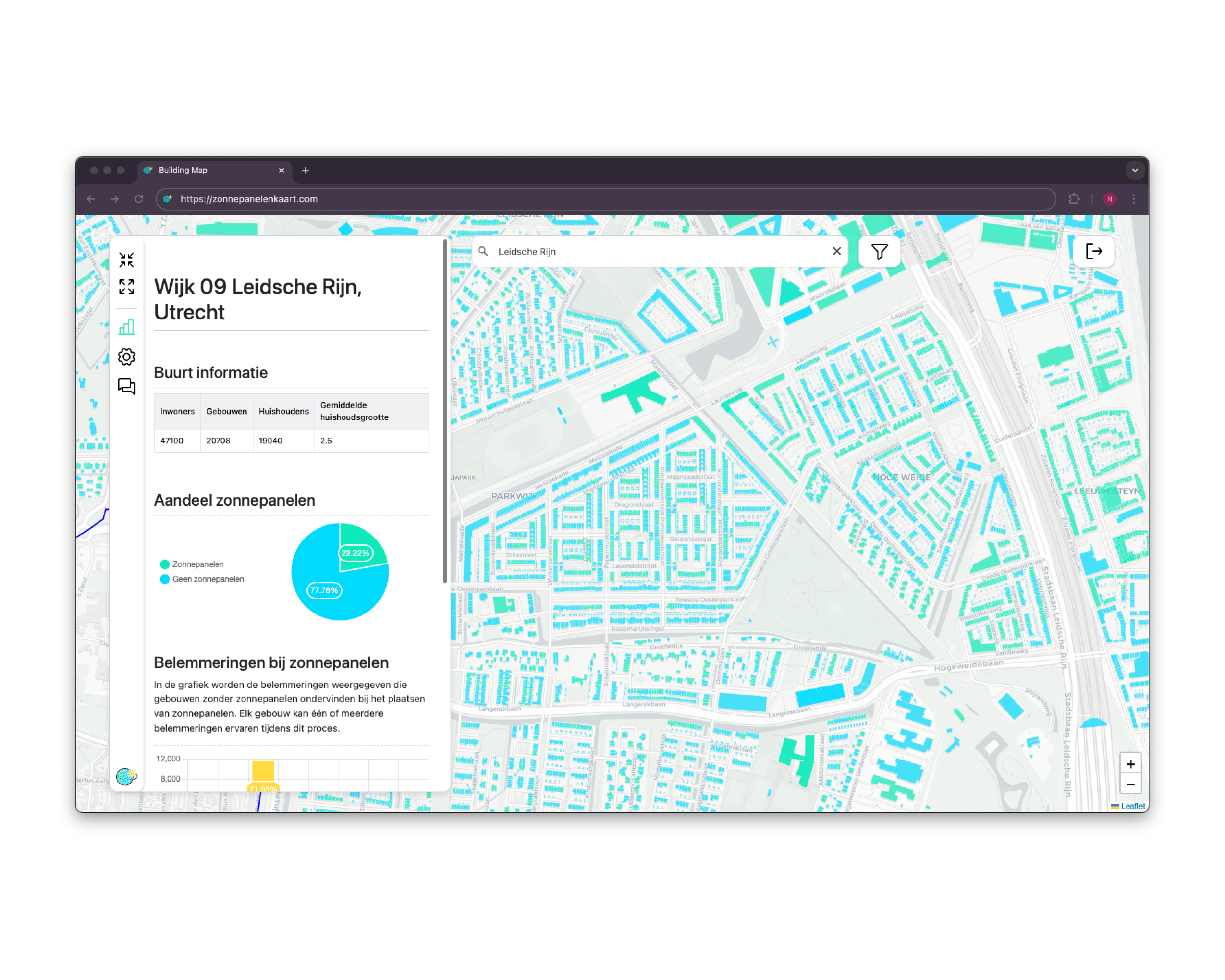Empowering the Green Energy Transition with Data Science: The Zonnepanelenkaart

At Atrici, we believe in contributing to the transition toward more sustainable energy usage. And what better way for a team of data scientists, passionate about computer vision, to help than to develop an AI model that identifies solar panels in high-resolution aerial images at the pixel level!
Using publicly available high-resolution aerial photography, we meticulously labeled 6 square kilometers of rooftop area by hand, outlining polygons on images where we could visually identify solar panels. This manual labeling process resulted in a high-quality dataset, ready for training our AI model.
With the dataset in hand, we began building the AI model from the ground up. Leveraging deep learning techniques, we trained our model on our custom-labeled dataset. This marked the completion of the AI development, but the biggest challenge still lay ahead: applying the model across the entire Netherlands.
Processing the aerial imagery for all of the Netherlands presented a significant technical challenge, as the total dataset amounted to over 24 terabytes of data. It took several weeks for our model to process all the imagery and identify solar panels across the country.
The final and perhaps most intricate phase was developing the web application. This was an iterative process, starting with the design of the interactive map and the landing page. We focused on making the platform intuitive and user-friendly, allowing users to easily explore solar panel coverage throughout the country.
The result? A powerful application where users can visually explore the solar landscape of the Netherlands. Network operators can identify where solar energy is being generated, solar panel vendors can target specific regions more strategically, and home battery providers can identify areas with high solar panel installations to market their products.
We’re incredibly proud of the final product. There’s plenty of room for future expansion, and we’re excited to continue improving the platform. For now, we at Atrici are proud to have contributed to a greener and more data driven world through our work on the zonnepanelenkaart.
Visit the zonnepanelenkaart



